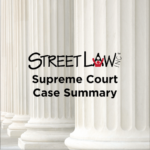In a 19th Amendment video, produced by the Administrative Office of the U.S. Courts for use in classrooms, courtrooms, and the distance-learning space, an unlikely connection is made between two rights activists from different eras. Suffragette Virginia Minor and Vietnam war protester Mary Beth Tinker were separated by 100 years, but their passions came together in the legal history of the nation and of St. Louis, where they each worked through the courts to make social change. Both cases were decided – with different outcomes – by the Supreme Court of the United States.
The Constitution in Action – State Challenges to Federal Authority: The Kentucky and Virginia Resolutions
Students in this simulation, as Republican members of the Kentucky and Virginia legislatures in 1798 and 1799, consider how they will oppose the Alien and Sedition Acts. Students will then act as members of other state legislatures and consider how to respond to Kentucky and Virginia. By engaging in this historical moment, students will wrestle with the ongoing tension between the Article VI, Clause 2, of the Constitution, which establishes the federal government as the “supreme Law of the Land,” and the Tenth Amendment, which reserves powers “not delegated to the United States” to the states or the people.
Act I: What Were the Various Plans at the Constitutional Convention?
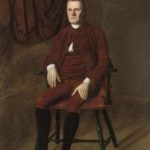
This short video highlights the four plans discussed during the first two weeks of the Convention: Madison’s Virginia Plan; Sherman’s New Jersey Plan; Hamilton’s “monarchical” plan; and, finally, Madison’s amended Virginia Plan. Each plan attempted to reconcile the potential conflicts between a strong national government and strong state governments. Professor Gordon Lloyd notes that an inability to compromise resulted in a stalemate after the first two weeks.
Lesson Plan: How States Redistrict – The Case of 2022
This lesson plan explores the Congressional and state redistricting processes in several states, including Texas, Florida, Colorado, Montana, Oregon, North Carolina, Michigan, Pennsylvania, New York, California, Illinois, Ohio, and West Virginia. The lesson extends to the legislative, executive, and judicial processes as well as the geographic and demographic considerations of redistricting.
Virginia v. Black (2003)
The Constitutional Convention
In this lesson, students will use C-SPAN video clips to examine the founding principles that emerged from the Constitutional Convention as well as hear about some of the people who participated. Students will use this information to analyze the role the compromise played in the creation of the Constitution.
Our Rights
The book Our Rights, written by David J. Bodenhamer, uses historical case studies to explore the rights in the Constitution. Supreme Court cases are used to demonstrate how a right received its modern interpretation, how the right applies today, and how courts and other interpreters seek to balance this right with important societal concerns such as public safety. The complete book or individual chapters can be downloaded.
The Bill of Rights: Debating the Amendments
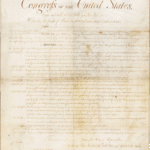
In this lesson, students will examine a copy of twelve possible amendments to the United States Constitution as originally sent to the states for their ratification in September of 1789. Students will debate and vote on which of these amendments they would ratify and compare their resulting “Bill of Rights” to the ten amendments ratified by ten states that have since been known by this name.
The Constitution: Counter Revolution or National Salvation
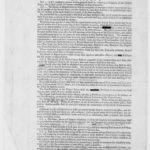
It is Fall 1787. The Federal Convention has recently concluded its closed door meetings in Philadelphia and presented the nation with a new model for the government. It is now up to each special state convention to decide whether to replace the Articles of Confederation with this new constitution. The debate is passionate and speaks directly to what the founding fathers had in mind in conceiving this new nation. Does this new government represent salvation or downfall?
The Constitution: Drafting a More Perfect Union
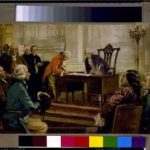
Students will analyze an unidentified historical document and draw conclusions about what this document was for, who created it, and why. After the document is identified as George Washington’s annotated copy of the Committee of Style’s draft constitution, students will compare its text to that of an earlier draft by the Committee of Detail to understand its evolution.
